SpaceX Starlink Satellites; NEO Asteroid 1999 KW4
Posted: 27 May 2019
As has been typical for the past few days, strong winds were blowing during the day on Sunday, 26 May 2019. As sunset approached the wind was still blowing, although not as strongly. I probably would have skipped going to the observatory if not for wanting to photograph two special objects: the SpaceX Starlink satellites train of 60 satellites and the Near Earth Object (NEO) Asteroid 1999 KW4 (about Mag. +12), which had its closest approach on Saturday, 25 May (visible from the southern hemisphere).
|
Open: Sunday, 26 May 2019, 1850 MST Temperature: 73°F |
Session: 1355 Conditions: Mostly clear, windy |
Equipment Used:
12" f/8 LX600 w/StarLock
2" 24mm UWA eyepiece
SkyTracker Pro
Camera:
D850 DSLR
I set up the iOptron SkyTracker Pro on the observatory patio to photograph the SpaceX Starlink satellites train during their pass this night.
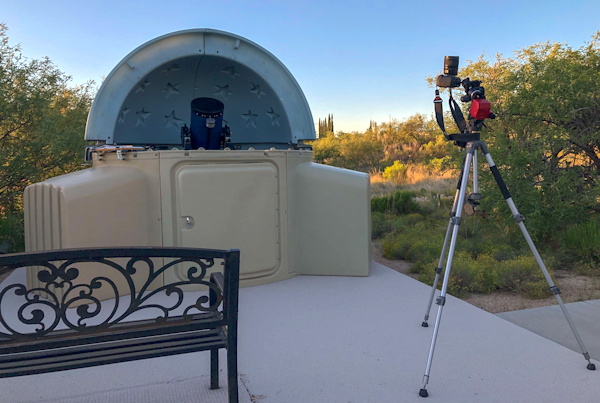
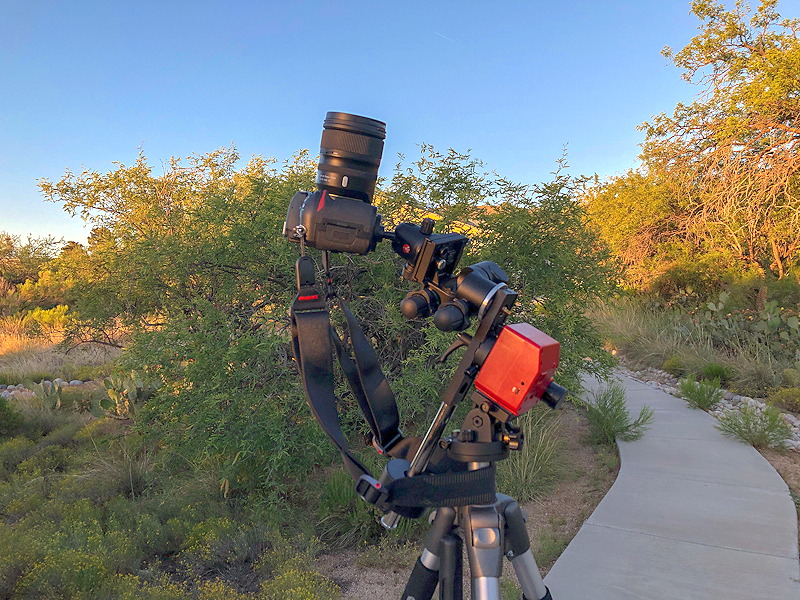
1925 MST: sunset. (Time approximate due to clouds low along the western horizon.)
1932 MST: the wind was calming down. Now just breezy.
1948 MST: LX600 ON, StarLock OFF, High Precision OFF.
1950 MST: Meade Stella Wi-Fi Adapter ON. Used SkySafari 6 Pro on the iPhone to point the 12" telescope at the NEO Asteroid 1999 KW4, which I planned to image after the Starlink satellites pass. The asteroid was low in the southwestern sky and might possibly be behind a tree when I hoped to image it.
1954 MST: Wi-Fi OFF.
2000 MST: polar aligned the SkyTracker Pro.
2007 MST: wind was calm now.
2033 MST: began watching for the SpaceX Starlink satellites to appear. At 2038 MST got my first sight of them. Several of the satellites brightened up quickly and were considerably brighter than I had expected. I only took time to count about 10 satellites although I am sure that many more were visible. The following photos were taken with a Nikon D850 DSLR and Tamron 24-70mm lens at a focal length of 24mm (FOV 73° x 53°), f/2.8, ISO 4000. The full frame photos show satellites nearly across the entire wide field-of-view.
Full frame (53° wide), 10 seconds exposure
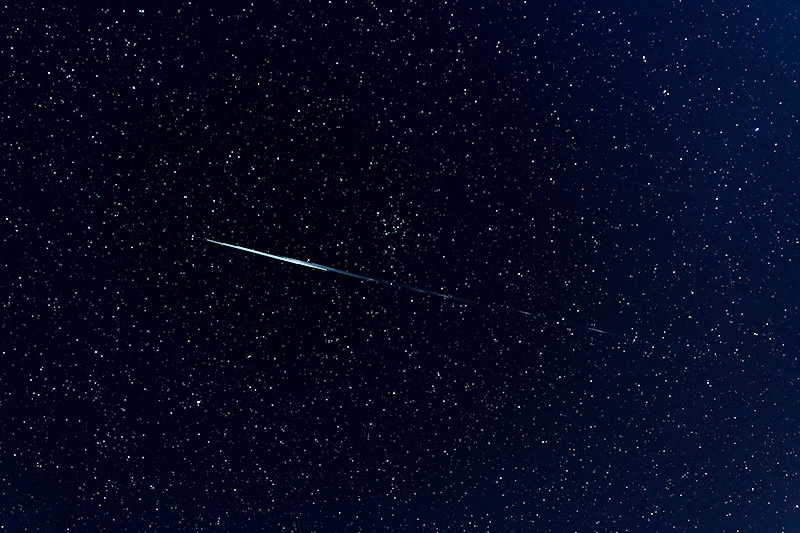
Above photo cropped to show some individual satellites
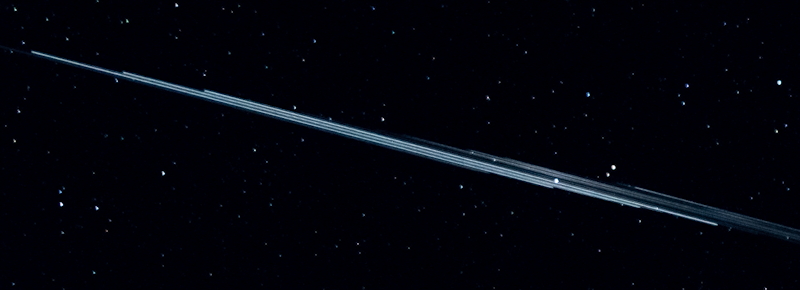
Full frame (53° wide), 1 second exposure
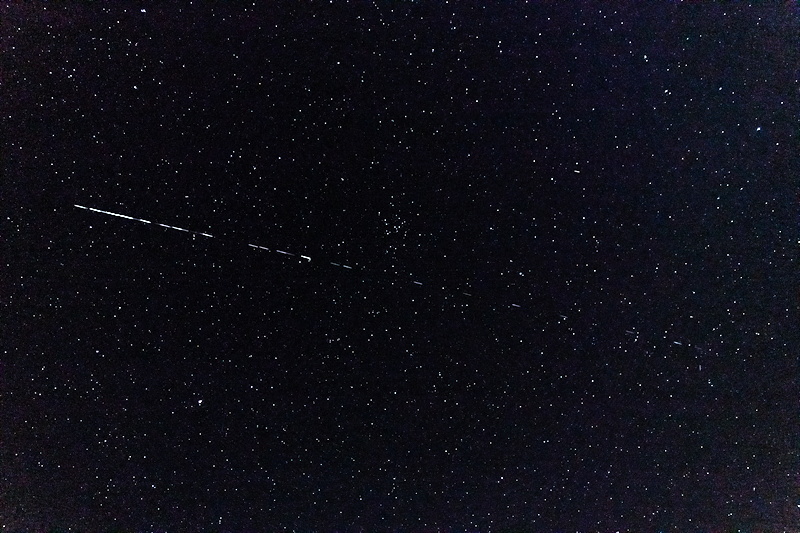
Two points I would like to make:
1. As someone who lives in a rural area where satellite Internet access is the only viable option (I'm on HughesNet), I understand the need for high speed, low latency, satellite connections to the Internet.
2. That said, as is evident from these photos, the planned thousands of Starlink and other similar satellites will seriously degrade the night sky for all of humanity and will have serious impacts to professional and amateur astronomers. People will see more satellites than stars in their night sky. That is not good.
After the Starlink pass ended I returned to the observatory and quickly set up to image NEO Asteroid 1999 KW4. I mounted the D850 DSLR at prime focus + focal reducer, focused on the star Regulus, and locked the 12" telescope primary mirror.
2050 MST: Wi-Fi ON.
Used SkySafari 6 Pro to GOTO the asteroid.
2053 MST: StarLock ON.
Took StarLock autoguided, 1 minute, ISO 6400, White Balance 4000K, exposures at various intervals. The top image shows the rapid movement of Asteroid 1999 KW4. The bottom image is an animated GIF showing the asteroid movement over a 2 minute period.
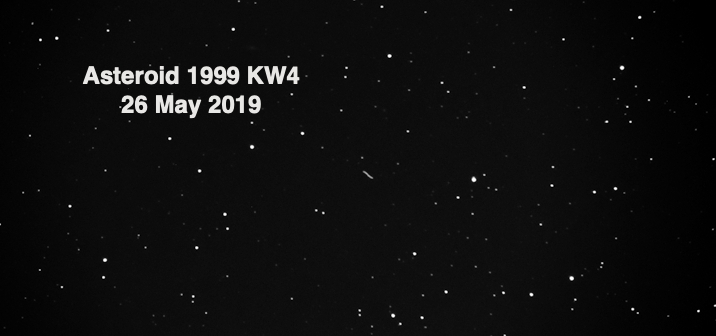
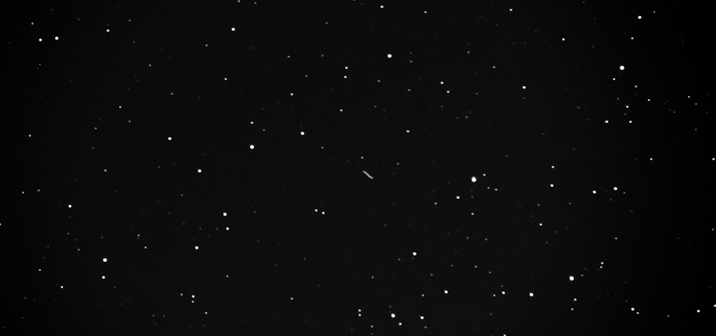
Next, I mounted the D850 DSLR at prime focus to try imaging of some galaxies. Unfortunately, as has been the case on the last several nights, astronomical seeing was lousy. I was not able to get any usable images.
2123 MST: StarLock OFF, High Precision OFF.
Viewed M95 (galaxy), 102X.
2138 MST: LX600 OFF.
|
Close: Sunday, 26 May 2019, 2148 MST Temperature: 59°F |
Session Length: 2h 58m Conditions: Clear |
Comments are welcome using Email. Twitter users can use the button below to tweet this report to their followers. Thanks.
Cassiopeia Observatory Home Page
Copyright ©2019 Michael L. Weasner / mweasner@me.com
URL = http://www.weasner.com/co/Reports/2019/05/27/index.html
